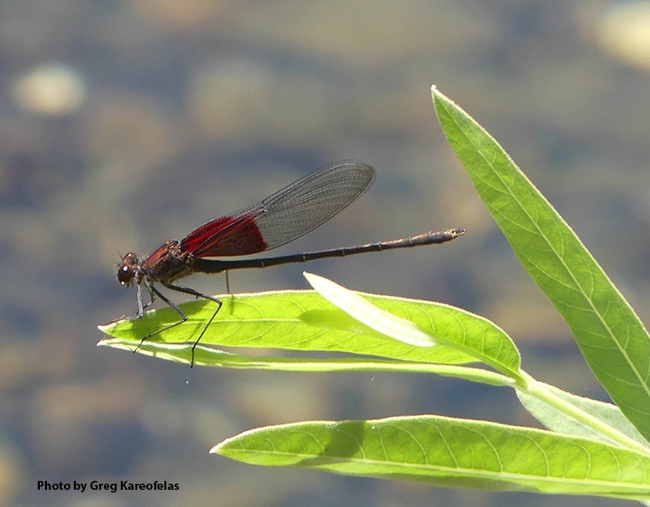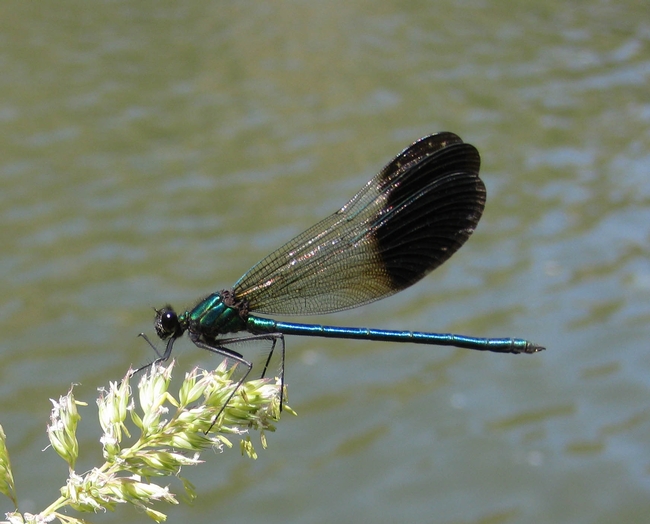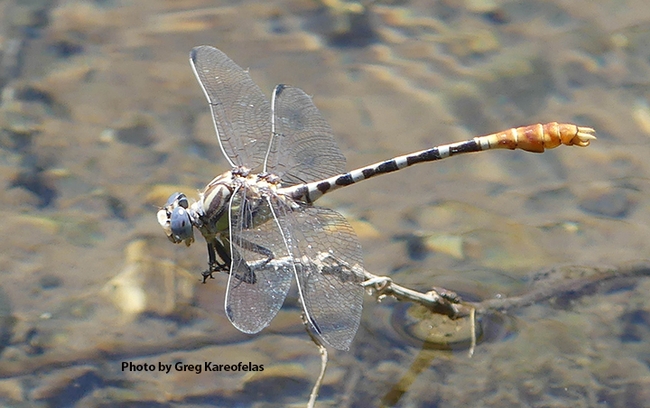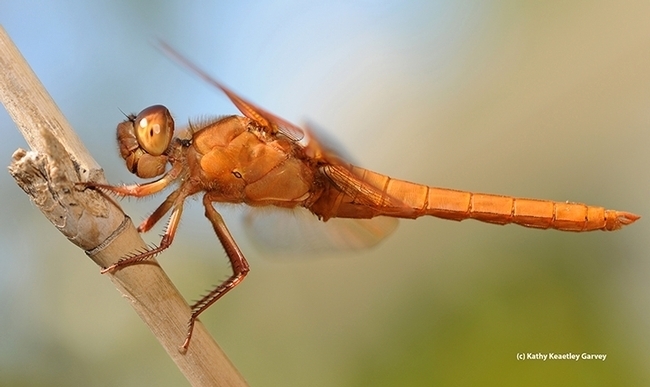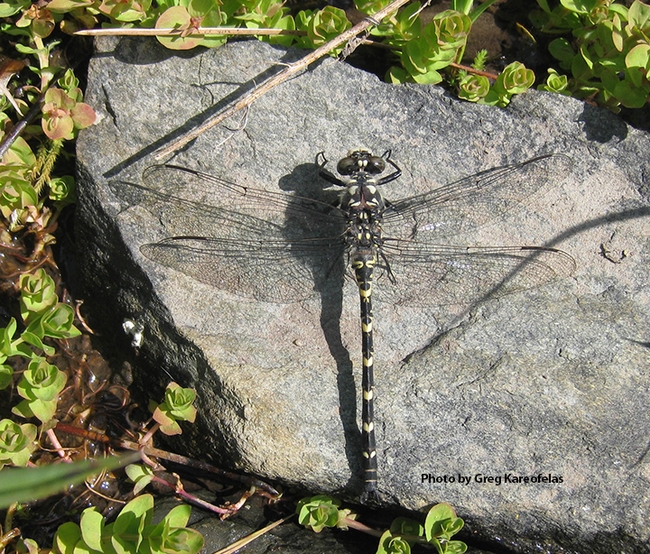- Author: Kathy Keatley Garvey
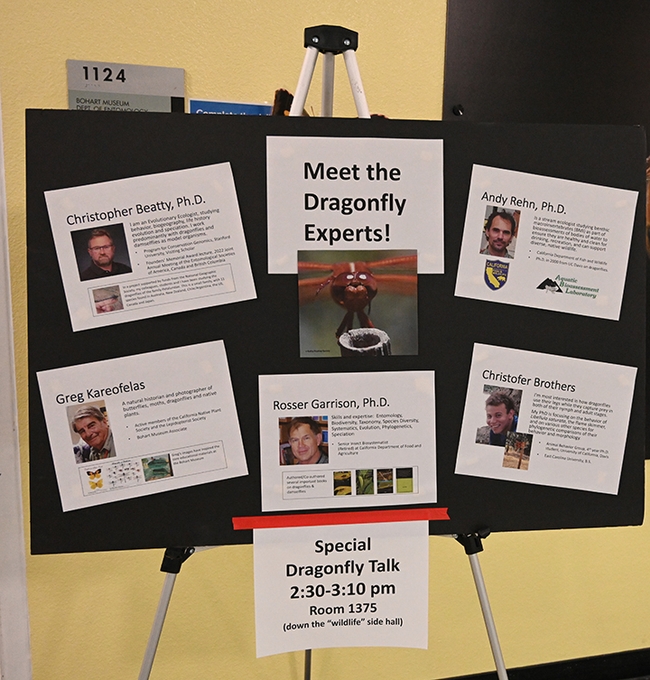
That was the theme of the Bohart Museum of Entomology open house on Sunday afternoon, Nov. 6, and dragonflies do just that--they rule.
They don't just rule in the water as larvae and in the air as adults.
They ruled at the Bohart Museum open house as visitors examined the displayed specimens; admired the images in the displayed books and the slide presentations; and chatted with the dragonfly experts.
A sign, "Meet the Dragonfly Experts," greeted the more than 220 guests:
- Rosser Garrison, retired from the California Department of Food and Agriculture (Pest Diagnostics Branch of Plant Health and Pest Prevention Services)
- Christopher Beatty, a visiting scholar in the Program for Conservation Genomics at Stanford University
- Bohart associate Greg Kareofelas
- UC Davis doctoral student Christofer Brothers of the laboratory of Professor and Chancellor's Fellow Stacey Combes, Department of Neurobiology, Physiology and Behavior, College of Biological Sciences.
- Andy Rehn, stream ecologist with the California Department of Fish and Wildlife and a UC Davis doctoral alumnus
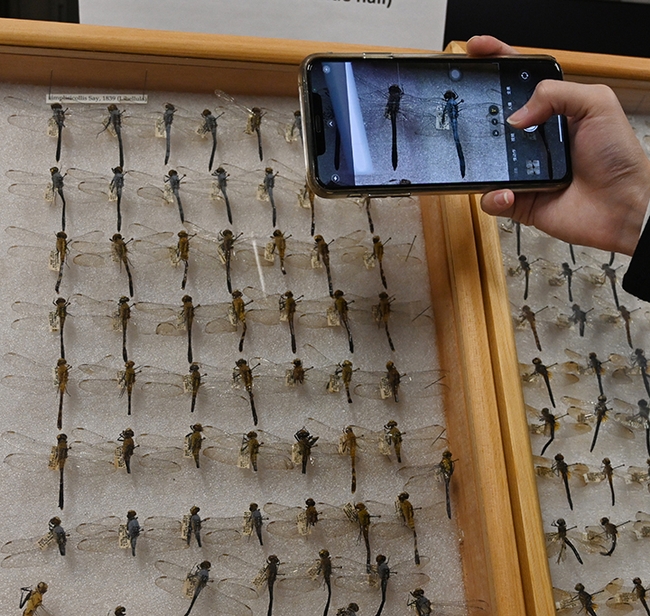
Garrison, widely recognized as one of the current leading experts of the taxonomy of New World Odonata, delivered an hour-long presentation and answered questions. He and his wife, Natalia von Ellenrieder, a senior insect biosystematist with CDFA, have worked intensively with the Odonata fauna of the Neotropical region. He has written more than 100 publications pertaining to Odonata, including three books: Dragonfly Genera of the New World: An Illustrated and Annotated Key to the Anisoptera (2006), Damselfly Genera of the New World: An Illustrated and Annotated Key to the Zygoptera (2010) and, as co-author, Dragonflies of the Yuangas: A Field Guide to the Species from Argentina (2007).
Garrison told the crowd that "There are over 6300 species of dragonflies throughout the world. They are excellent fliers; they hunt by sight and seize their prey (other insects) on the wing. Their size ranges between 2 and 15 centimeters."
Other facts discussed about dragonflies included:
- The larvae are aquatic and they can be carnivores.
- The fossil record is rich.
- Dragonfly relatives existed before the onset of the dinosaurs---Triassic Period, 250 to 200 million years ago
- They have a primitive flight mechanism compared to other insects, bees, butterflies, beetles and flies.
- Dragonflies mostly mate on the wing.
- They are not poisonous and they do not sew up people's ears (“devil's darning needles”). However, one group of large dragonflies are called—appropriately—"Darners."
- Larvae have a prehensile foldable lower lip unique in insects; it is used for capturing prey like mosquito larvae or even small fish.
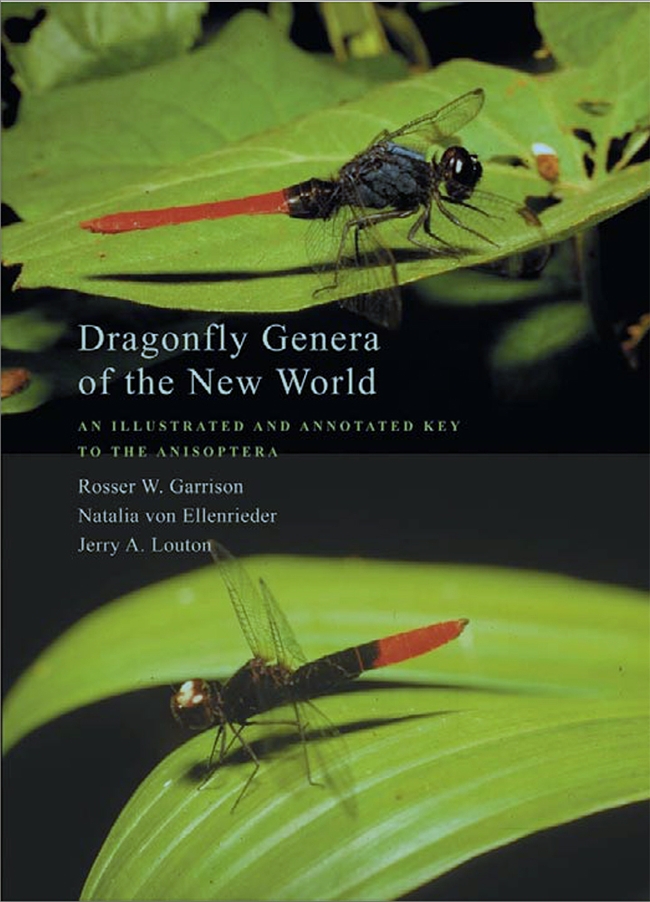
Garrison's publications include descriptions of more than 75 new species and six new genera of Odonata. In the Americas, he has done entomological field work in the United States, Mexico, Costa Rica, Panama, Guyana, French Guiana, Venezuela, Ecuador, Peru, Brazil, Argentina and Chile. He has also collected dragonflies in Australia, Papua New Guinea, China, Thailand, Namibia and Iran. One genus and 10 species of Odonates are named after him.
Christopher Beatty
Christopher Beatty has been working "for a few years on petaltail dragonflies, with much of the work focused on the Black Petaltail (Tanypteryx hageni) in California and Oregon." Beatty was recently selected to present the prestigious Entomological Society of America's Founders' Memorial Lecture at the 2022 Joint Annual Meeting of the Entomological Societies of America, Canada, and British Columbia. He'll speak at the awards breakfast on Nov. 15 on "The Passionate Observer: The Life and Times of Jean-Henri Fabre." Fabre (1823-1915) was a French naturalist, entomologist, educator, and author.
Beatty said he has focused much of his entomological career studying the behavior and ecology of dragonflies and damselflies, having served in research and teaching positions at the University of Vigo (Spain), Santa Clara University, Cornell University, the University of Kiel (Germany), and Stanford University. He has authored or co-authored more than 25 peer-reviewed articles since 2003, and he is co-editor of the newly published Dragonflies & Damselflies: Model Organisms for Ecological and Evolutionary Research, 2nd Edition (Oxford University Press).
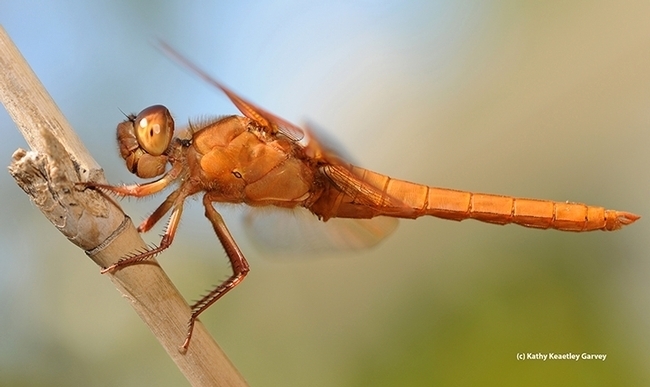
Andy Rehn is a stream ecologist studying benthic macroinvertebrates as part of bioassessments of bodies of water to ensure they are healthy and clean for drinking and recreation and can support diverse, native wildlife. He received his doctorate, studying dragonflies, at UC Davis in 2000.
Christofer Brothers
Cristofer Brothers is a fourth-year animal behavior doctoral student. He is researching how dragonflies, in both their nymph and adult stages, use their legs to capture prey. In particular, he studies the behavior of the flameskimmer, Libellula saturata. Brothers delivered a guest presentation on dragonfly predation behavior at the 2022 UC Davis Bio Boot Camp.
Greg Kareofelas
Greg Kareofelas credits Andy Rehn with inspiring him to study dragonflies. "That was when Andy was a doctoral student at UC Davis." Kareofelas, a longtime Bohart associate, naturalist and insect photographer, assists at Bohart events and presents informational talks at the Bohart Museum lab meetings, among other venues. He most recently gave a presentation on dragonflies at the Nov. 4th lab meeting. His work includes providing images for the poster, "Dragonflies of California," available in the Bohart Museum gift shop. Entomologist Fran Keller, a professor at Folsom Lake College and a UC Davis doctoral alumnus, designed the poster.
The Bohart Museum, founded in 1946, is located in Room 1124 of the Academic Surge Building, 455 Crocker Lane, UC Davis campus. Directed by Lynn Kimsey, UC Davis distinguished professor of entomology, it is the global home of eight million insect specimens, as well as the live "petting zoo" and an insect-themed gift shop stocked with t-shirts, hoodies, books, posters, jewelry, collecting equipment and more. Named for UC Davis professor and noted entomologist Richard Bohart, it is open to the public from 8 a.m. to noon, and 1 to 5 p.m., Mondays through Thursdays.
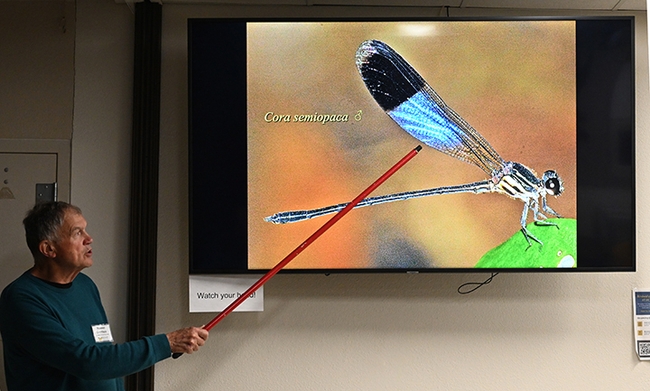
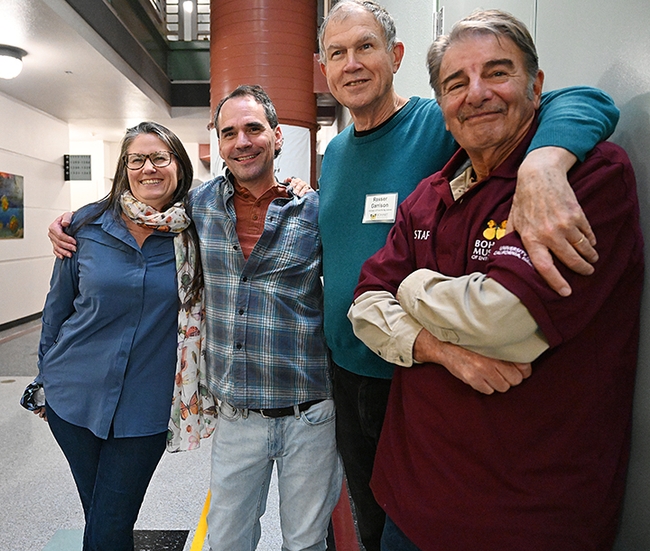
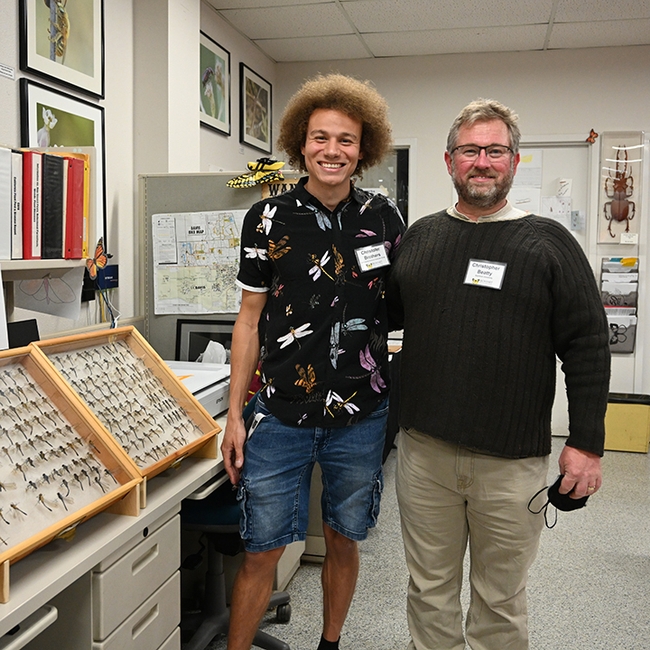
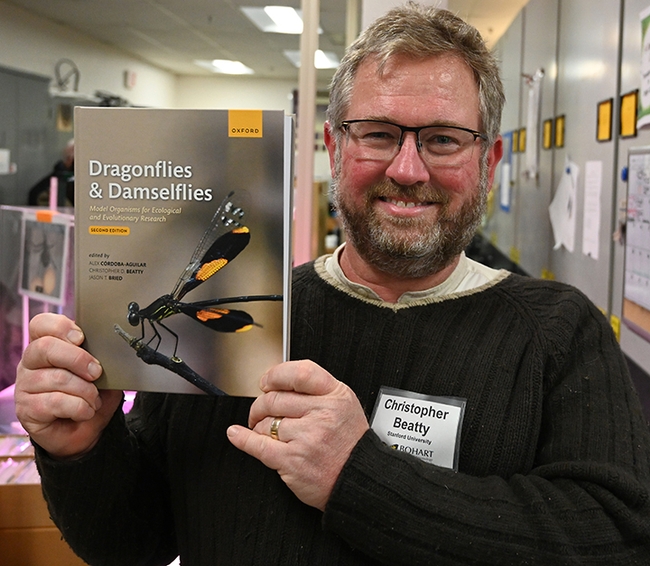
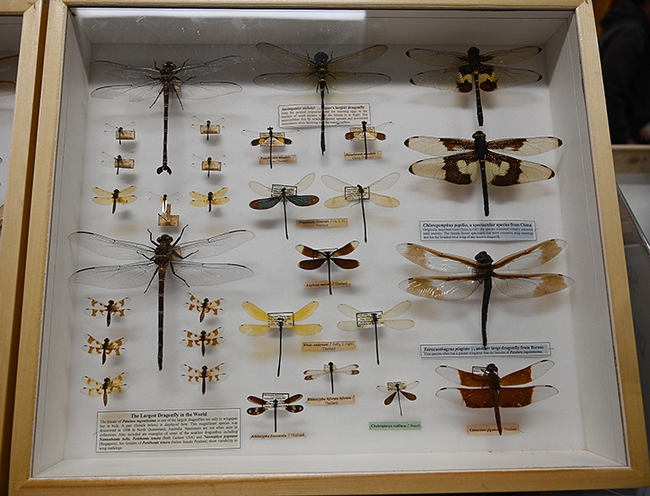
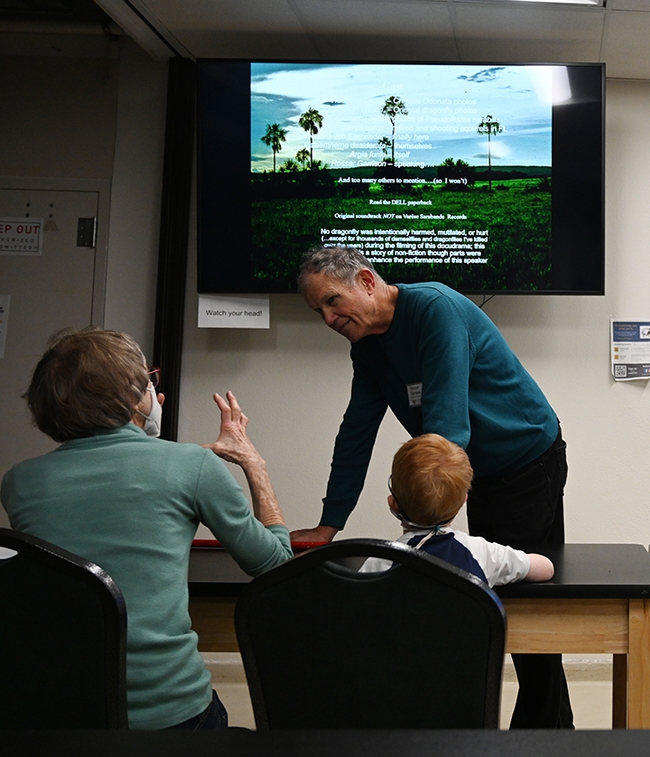
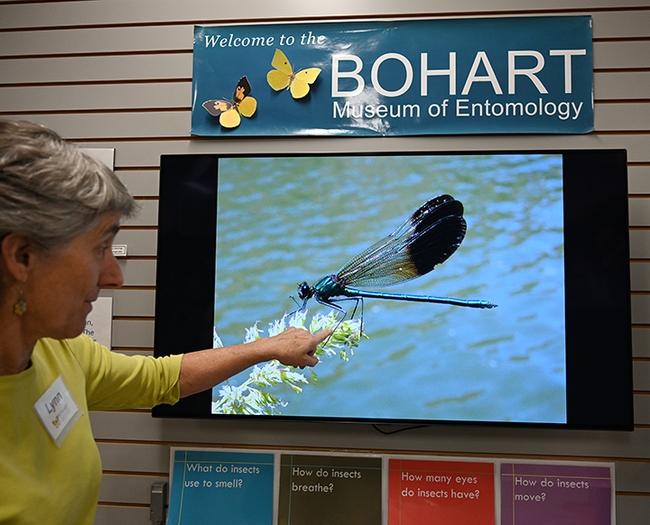
- Author: Kathy Keatley Garvey
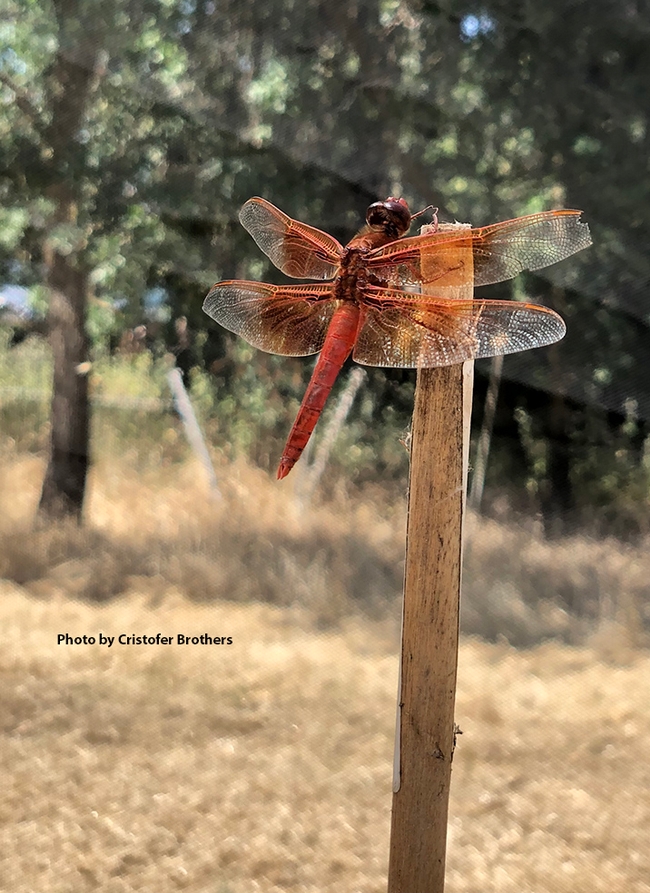
Better yet, let's make Sunday, Nov. 6 "The DragonFLY Day."
That's when the Bohart Museum of Entomology is hosting an open house--themed "Dragonflies Rule!"--from 1 to 4 p.m. Sunday, Nov. 6 in Room 1124 of the Academic Surge Building, 455 Crocker Lane, UC Davis.
It's free and family friendly. Among the dragonfly experts lending their expertise will be Rosser Garrison, formerly of the California Department of Food and Agriculture; Christopher Beatty, a visiting scholar in the Program for Conservation Genomics at Stanford University; Bohart associate Greg Kareofelas; UC Davis doctoral student Christofer Brothers; and UC Davis alumnus Andy Rehn, ecologist at the California Department of Fish and Wildlife, among others.
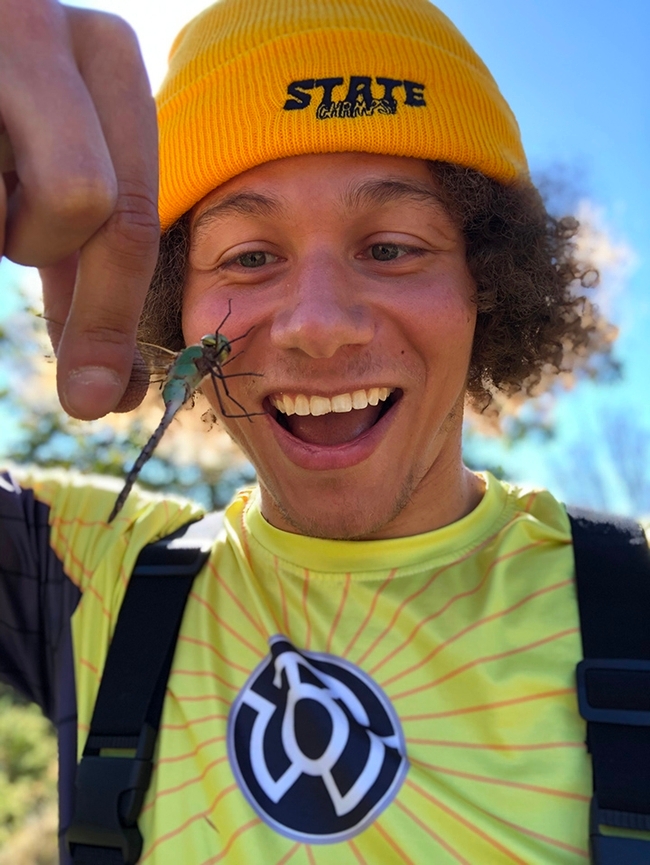
The males are a firecracker red and delightful to observe. Sometimes they "permit" you to approach so close that you can see what's on the menu: a honey bee, sweat bee, syrphid fly or other prey.
Cristofer Brothers, a fourth-year animal behavior doctoral student at UC Davis, took this image (above) of a stunningly beautiful flameskimmer. "I'm most interested in how dragonflies use their legs while they capture prey in both of their nymph and adult stages," he said. "My PhD is focusing on the behavior of Libellula saturata, the flame skimmer, and on various other species for phylogenetic comparisons of their behavior and morphology."
"I've been fascinated by dragonflies since I was a kid, and would always try to save adults that fell into the pool," he said. "As a teenager, I was a lifeguard and always loved it when dragonflies would perch on my rescue tube, and always wanted to learn more about them. Now, I have the privilege to spend all day reading about, thinking about, and looking at them, so I'm really living the dream!"
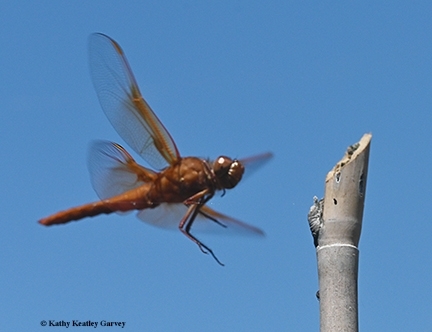
Brothers delivered a guest presentation on dragonfly predation behavior at the 2022 UC Davis Bio Boot Camp. His talk took place along the banks of Putah Creek where the group met to learn about and search for dragonflies.
Also during the Bohart Museum open house, a family arts-and-crafts activity is planned: visitors can color pages from Kathy Claypole Biggs' dragonfly coloring book. Guests can view the Lepidoptera (butterflies and moths) collection, curated by entomologist Jeff Smith; and "pet" and take selfies of some of the live animals in the petting zoo, which includes Madagascar hissing cockroaches, stick insects and tarantulas.
The Bohart Museum, founded in 1946, is directed by Lynn Kimsey, UC Davis distinguished professor of entomology. It is the global home of eight million insect specimens, as well as the live "petting zoo" and an insect-themed gift shop stocked with t-shirts, hoodies, books, posters, jewelry, collecting equipment and more.
Named for UC Davis professor and noted entomologist Richard Bohart, the Bohart Museum is open to the public from 8 a.m. to noon, and 1 to 5 p.m., Mondays through Thursdays. More information is available on the website at https://bohart.ucdavis.edu or by contacting bmuseum@ucdavis.edu.
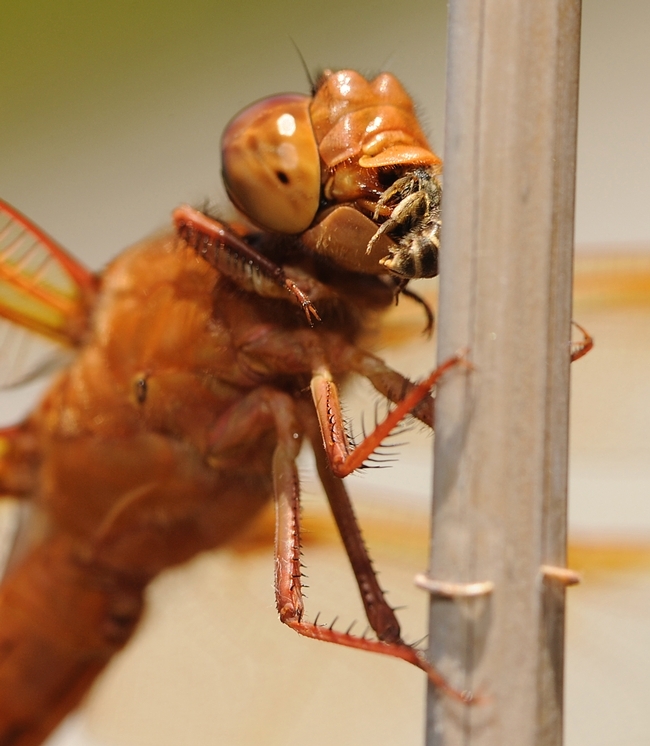
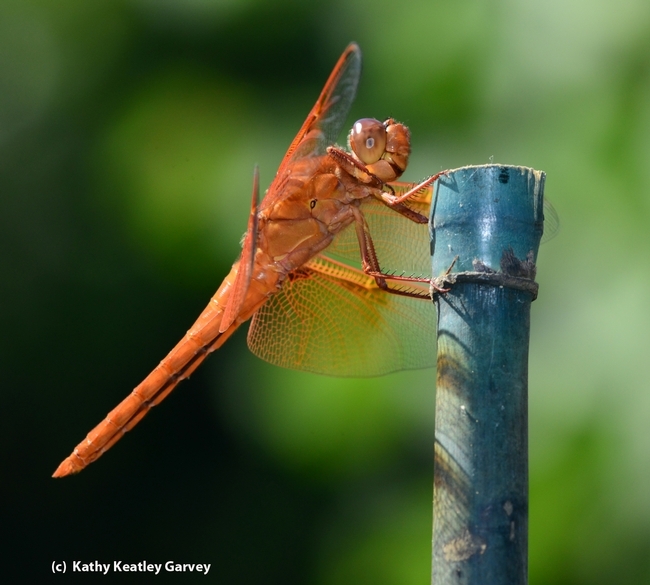
- Author: Kathy Keatley Garvey
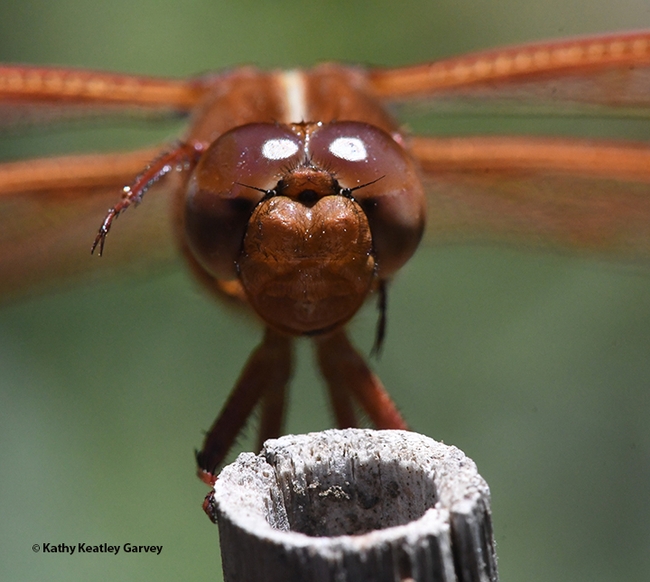
The open house, free and family friendly, set from 1 to 4 p.m. in Room 1124 of the Academic Surge Building. 455 Crocker Lane, and will feature noted dragonfly expert Rosser Garrison of Sacramento, widely recognized as one of the current leading experts of the taxonomy of New World Odonata.
Dragonflies were here before the dinosaurs. “Dragonfly relatives existed before the onset of the dinosaurs---Triassic Period, 250 to 200 million years ago,” Garrison says. Some of these gigantic dragonfly-like insects had wingspans of about three feet.
Garrison, who retired in 2017 as a senior insect biosystematist in the California Department of Food and Agriculture's Plant Pest Diagnostics Branch, Sacramento, continues his research on dragonflies. He has collected more than 50,000 dragonflies specimens throughout the world. His collection now contains more than half of all the known species of the world.
Garrison, who holds a doctorate (1974) from UC Berkeley, served as the senior biologist/entomologist for Los Angeles County before becoming a senior insect biosystematist with the Plant Pest Diagnostics Branch, California Department of Food and Agriculture (CDFA), in Sacramento, where he identified orthopteroid, heteropteroid, other groups of invertebrates including mollusks. He retired from CDFA in August 2017 and continues working on Odonata at his home in the Pocket area of Sacramento.
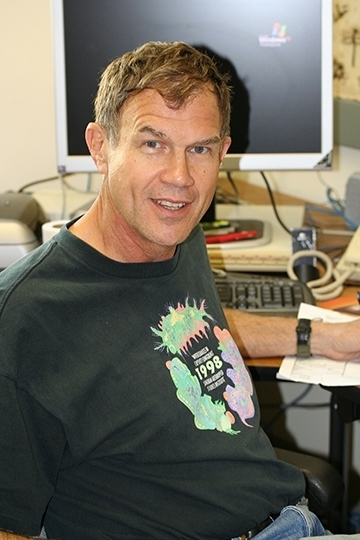
"I continued to collect and maintain a collection of insects from an early age and later enjoyed identifying them using the third edition of the classic entomology text An Introduction to the Study of Insects by D.J. Borror and D. Delong," he said. His main interest is the systematics of Odonata with a strong emphasis on the Neotropical fauna.
He and his wife, Natalia von Ellenrieder, a senior insect biosystematist with CDFA, have worked intensively with the Odonata fauna of the Neotropical region. He has written more than 100 publications pertaining to Odonata, including three books: Dragonfly Genera of the New World: An Illustrated and Annotated Key to the Anisoptera (2006), Damselfly Genera of the New World: An Illustrated and Annotated Key to the Zygoptera (2010) and, as co-author, Dragonflies of the Yuangas: A Field Guide to the Species from Argentina (2007).
Garrison has written or co-written taxonomic revisions of more than 20 genera of New World Odonata, such as Enallagma (1984), Hetaerina(1990), Erpetogomphus (1994), Mnesarete (2006) and Telebasis (2009). His present taxonomic work, jointly with von Ellenrieder, focuses on the speciose genus Argia on which he has published several revisions (1994, 1996, 2019, 2019, 2007, 2015, 2017, 2018 and 2022 (in press).
Garrison's publications include descriptions of more than 75 new species and six new genera of Odonata. In the Americas, he has done entomological field work in the United States, Mexico, Costa Rica, Panama, Guyana, French Guiana, Venezuela, Ecuador, Peru, Brazil, Argentina and Chile. He has also collected dragonflies in Australia, Papua New Guinea, China, Thailand, Namibia and Iran. One genus and 10 species of Odonates are named after him.
Bohart associate Greg Kareofelas said that other local dragonfly specialists and students "will be there to answer all manner of questions concerning dragonflies and damselflies." They will include Christopher Beatty, visiting scholar, Program for Conservation Genomics, Stanford University; UC Davis alumnus Andy Rehn, ecologist at the California Department of Fish and Wildlife; and UC Davis doctoral student Christofer Brothers, who studies dragonflies.
"Bring photos you have taken to have identifications made," Kareofelas says. An arts and crafts activity for all ages is also planned.
Throughout the afternoon, the Lepidoptera (butterflies and moths), curated by entomologist Jeff Smith, will be open, as will the live insect display showcasing Madagascar hissing cockroaches, stick insects and tarantulas. Visitors are invited to touch or "pet" the cockroaches and stick insects and take selfies.
The Bohart Museum, founded in 1946, is directed by Lynn Kimsey, UC Davis distinguished professor of entomology. It is the global home of eight million insect specimens, as well as the live "petting zoo" and an insect-themed gift shop stocked with t-shirts, hoodies, books, posters, jewelry, collecting equipment and more. Named for UC Davis professor and noted entomologist Richard Bohart, it is open to the public from 8 a.m. to noon, and 1 to 5 p.m., Mondays through Thursdays.
